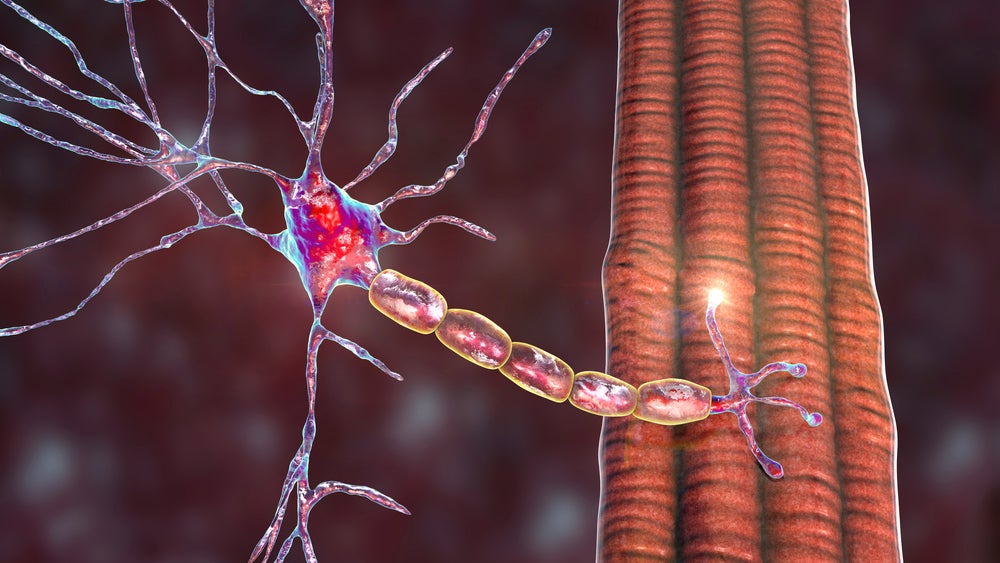The Duchenne muscular dystrophy (DMD) landscape across the seven major markets (7MM) – the US, France, Germany, Italy, Spain, the UK, and Japan – is projected to experience significant growth, with sales increasing from $2.3bn in 2023 to $5.2bn by 2033, according to leading data and analytics company GlobalData. This expansion is primarily driven by the recent approvals of innovative therapies, notably Sarepta Therapeutics/Roche’s Elevidysand Santhera Pharmaceuticals’ Agamree.
A substantial portion of this market growth is attributed to the treatment of ambulatory DMD patients. In 2023, exon-skipping therapies dominated the therapeutic landscape, generating approximately $1.0bn in sales within the 7MM. It is noteworthy that these figures are derived solely from the US and Japan, as exon-skipping therapies have yet to receive regulatory approval in the EU. If these therapies gain EU approval by 2033, GlobalData forecasts the sales of exon-skipping therapies to rise to $1.8bn across the 7MM. This significant market share is partly due to the high annual cost of therapy, which exceeds $1.0m in the US.
The US is poised to maintain its dominant position in the DMD market, commanding 84.8% of the total market share. This dominance emphasises the country’s proactive stance in adopting advanced therapies and its substantial investment in DMD research and treatment.
Gene therapies are also making inroads into the DMD treatment paradigm. By 2033, gene therapies are projected to contribute $821m to the DMD market, according to GlobalData’s Duchenne Muscular Dystrophy Market Opportunity Assessment, Epidemiology, Clinical Trials, Unmet Needs and Forecast to 2033 report. However, their market share remains comparatively modest, potentially due to the limited patient population eligible for these treatments, limits to patient access due to their high cost, and the nascent stage of gene therapy adoption.
In regulatory developments, PTC Therapeutics’ Translarna has faced challenges in the EU. The European Medicines Agency’s Committee for Medicinal Products for Human Use has confirmed its recommendation not to renew the conditional marketing authorisation for Translarna, citing its unconfirmed effectiveness in treating DMD. Conversely, in the US, PTC Therapeutics has resubmitted its New Drug Application for Translarna, which the Food and Drug Administrationhas accepted for review. If approved, GlobalData forecasts Translarna to generate $185m in US sales alone in 2033.
Despite advancements in DMD treatment, significant unmet needs persist, particularly for non-ambulatory patients. While recent approvals have expanded therapeutic options for ambulatory individuals, treatment availability for those who have lost mobility remains limited. Many emerging therapies, including exon-skipping and gene therapies, primarily target early-stage or ambulatory patients, leaving a gap in care for those with advanced disease. Additionally, access to these high-cost therapies is restricted by regulatory hurdles and reimbursement challenges, particularly in markets outside the US. As DMD progresses, patients experience severe respiratory and cardiac complications, yet there is a lack of effective, targeted treatments to address these later-stage manifestations. This emphasises the urgent need for therapies that can benefit non-ambulatory patients and improve long-term disease management across all stages of DMD.
Nevertheless, the DMD market is on an upward trajectory, propelled by recent therapeutic approvals and the potential expansion of treatment indications. While exon-skipping therapies currently lead the market, the anticipated approval of gene therapies and other novel treatments may diversify the therapeutic landscape. Corticosteroids are expected to remain integral to DMD management, highlighting the importance of a multifaceted approach to treatment, and providing a cheaper alternative with good efficacy to DMD patients.




